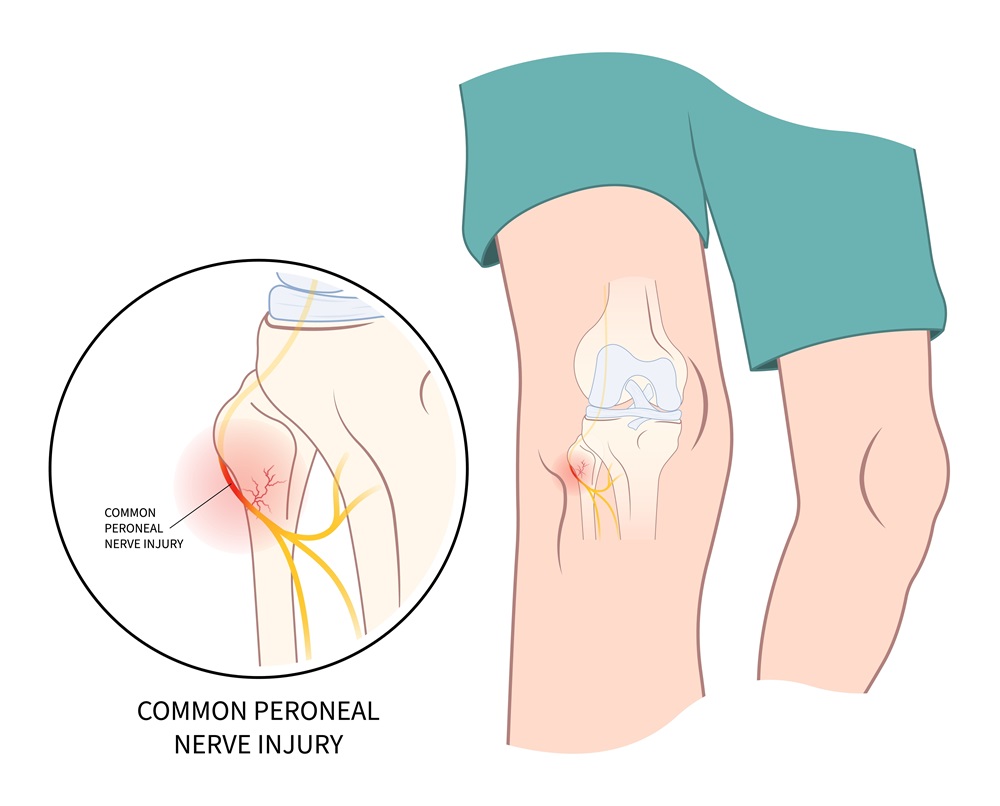Ankle sprains are common injuries, often occurring during sports or everyday activities. While they are typically associated with ligament damage, nerve injuries can also occur, leading to burning pain after ankle sprains if left untreated. Understanding the symptoms of nerve damage after ankle sprains, the nerves most commonly affected, and the treatment options available is essential for recovery.
How does an ankle sprain damage nerves?
During an ankle sprain, excessive force stretches or compresses the tissues in the ankle and lower leg. This trauma can affect nearby nerves, leading to irritation, compression, or even damage. Nerve injuries may occur directly due to the sprain or develop later due to swelling, scar tissue formation, or improper healing.
Signs and Symptoms of Nerve Damage after Ankle Sprain
Nerve injuries following an ankle sprain may cause signs and symptoms depending on the nerve involved.
Common Symptoms
- Burning Pain: Sharp, shooting, or burning sensations radiating from the knee to the foot.
- Tingling or Numbness: Pins-and-needles sensations or loss of feeling in specific areas.
- Muscle Weakness: Difficulty moving or controlling certain parts of the foot.
- Sensitivity: Heightened pain or discomfort when the area is touched or exposed to cold.
- Persistent Pain: Pain that lasts longer than typical ligament healing timelines.
Nerves Commonly Affected by Ankle Sprains
Several nerves around the ankle are susceptible to injury during a sprain:
Common peroneal nerve:

- This nerve is damaged closest to the fibula head, which is near the outside of the knee.
- Patients often feel numbness or tingling in the top of the foot and weakness in the ankle (eversion).
Superficial Peroneal Nerve
- Damage occurs halfway up the calf as the nerve passes from the muscle to the fascia or close to the outside of the ankle.
- Symptoms include numbness and paraesthesia over the top of the foot. Touching the nerve as it leaves the muscle and enters the skin reproduces pain
Deep Peroneal Nerve
- The nerve is damaged at the front of the ankle
- Symptoms include pain or numbness between the first and second toes and weakness in lifting the foot.
Sural Nerve
- Damage occurs as the nerve passes from the muscle to the skin halfway at the back of the calf or close to the outer part of the ankle.
- Patients report burning pain or tingling along the outer edge of the foot.
Tibial Nerve and Its Branches (e.g., Medial and Lateral Plantar Nerves)
- After an ankle sprain, the nerve is damaged on the inside of the ankle
- Symptoms include pain or numbness in the sole and difficulty moving the toes or arch of the foot.

Diagnosing Nerve damage after Ankle Sprain
Your doctor will assess your ankle for pain, tenderness, sensation and muscle strength to identify the nerve involved.
Sometimes, we use other investigations to confirm a diagnosis. Nerve conduction studies can assess nerve function and determine possible trapping. MRI scans can identify scar tissue formation or other structural causes of nerve irritation. Ultrasound can visualise nerves and help confirm nerve irritation. Often, ultrasound shows signs of nerve thickening and swelling, confirming nerve entrapment.
Treatment Options for Burning Pain after Sprained Ankle
Conservative Management
Generally, we start with simple treatments. You should modify your activity to allow the nerve to heal and avoid exacerbating symptoms. Physiotherapy involving gentle stretching, mobility, and nerve gliding exercises can help reduce neural tension.
Sometimes, NSAIDs such as ibuprofen are helpful. Nerve medications such as duloxetine and amitriptyline work better for nerve pain.
Injections to relieve trapping are often used. Cortisone injections around the nerve reduce trapping and improve symptoms. Platelet-rich plasma injections are sometimes used instead of cortisone to reduce nerve swelling. On occasion, we use a more advanced procedure called a nerve hydrodissection. This is a minimally invasive procedure where a fluid (saline, dextrose, or anaesthetic) is injected around the affected nerve under ultrasound guidance to separate it from scar tissue or compressed structures.
Surgical Management
Surgery is rarely needed but may be considered for severe cases where the nerve is entrapped or compressed by bone or scar tissue. Procedures include nerve decompression or neurolysis (removal of scar tissue). Generally, we recommend exhausting all conservative measures, including injections, before considering surgery.
Final Word from Sportdoctorlondon on Symptoms of Nerve Damage after Ankle Sprain
Recognising the signs and symptoms of nerve damage after ankle sprain is critical to getting patients back to activity and sport. Treatments such as conservative measures and advanced techniques like nerve hydrodissection—are essential for recovery. If you suspect a nerve injury, seek evaluation by a Sports Doctor to ensure timely and effective management.


Leave A Comment